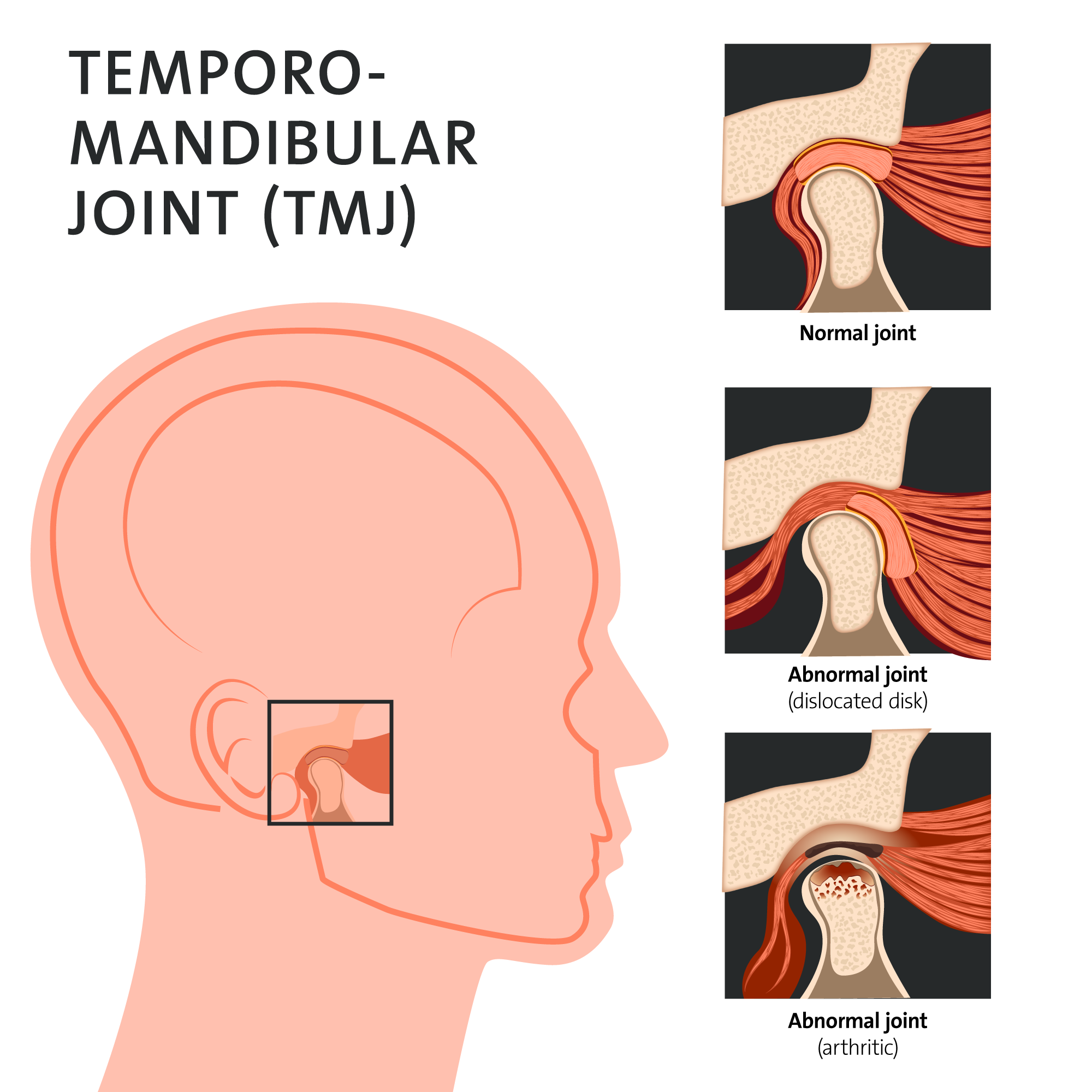What is TMJ?
Often referred to as “TMJ,” the dental condition falls under the category of Temporomandibular Joint and Muscle Disorders and can present itself in patients at varying degrees of severity. The condition includes pain and jaw dysfunction relating to how the jaw moves around the temporomandibular joint which acts as a sliding hinge. This joint connects the skull with the jawbone.
Researchers from The National Institute of Dental and Craniofacial Research, put these joint and muscle disorders into 3 categories.
Myofascial pain which includes discomfort that impacts the jaws function.
Joint dysfunction from displaced disc, dislocated jaw or injury to the end of the joint.
Arthritis and degenerative inflammation that can affect the jaw joint.
What are symptoms of TMJ?
According to the Mayo Clinic, symptoms can include pain in the face, ears, jaw, or mouth. Pain may be worse when chewing food or gum. You may experience clicking and popping when you are talking as well as jaw tenderness. TMJ symptoms can be as severe as chronic headaches on the side of your head or a locked jaw. There is a large range of severity of TMJ among dental patients.
What can you do about TMJ?
Exercises
You can do exercises which will help relax the muscles and increase mobility in the jaw joints. These can be done when symptoms are mild or nonexistent. Do not do these when pain is moderate to severe, instead the jaw should be rested as much as possible during these more painful episodes.
Assisted Opening - Place two fingers on lower front teeth, slowly open comfortably while pushing down with your fingers. Repeat 10 times.
Resisted Opening - Cup palm under chin, open jaw slowly and gently resist opening with hand under chin. Repeat 10 times.
Midline Exercise - Look in the mirror and bite teeth together. Look at the position of your two center teeth on the lower jaw (central incisors). Open slowly while watching these two teeth and attempt to keep lower jaw "centered" as you open. Repeat 10 times.
Simple Opening and Stretching - Open jaw slowly ten times as wide as you can comfortably.
Lateral Movement Exercise - Open jaw about one inch from clenched bite. Move lower jaw as far to the right without opening. Move jaw as far to the left without opening. Repeat 10 times.
Neck Stretch - Attempt to touch ear to shoulder by bending neck and not raising shoulder. Repeat 10 times and then do 10 more on the other side.
Mouth guard
We can make you a mouth guard to help hold your jaw in the correct position. This can be beneficial to help avoid additional pressure and clenching of your teeth. If you have concerns about TMJ, talk to Dr. Martin at your next dental visit to discuss your options.


